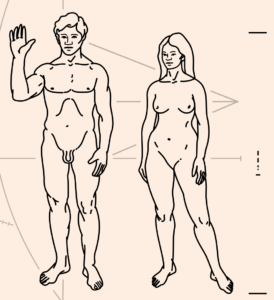 The beauty of modern science is that it gives researchers the ability to go back over old convention and re-shape facts along the way. Science is not infallible and scientists know that new research could throw out old rules in the blink of an eye. One of the most interesting fields of research for the scientific community is the charting of modern humans throughout the world. New research shows a game-changing truth regarding the lives of modern humans in Southeast Asia. How was this discovered? By going back over old research and finding new truths. Let’s dig in.
The beauty of modern science is that it gives researchers the ability to go back over old convention and re-shape facts along the way. Science is not infallible and scientists know that new research could throw out old rules in the blink of an eye. One of the most interesting fields of research for the scientific community is the charting of modern humans throughout the world. New research shows a game-changing truth regarding the lives of modern humans in Southeast Asia. How was this discovered? By going back over old research and finding new truths. Let’s dig in.
It was 1948 when an archaeologist named D.A. Hooijer pulled a pair of old teeth from a long abandoned cave on the island of Sumatra. The teeth, he noted, were the correct shape and size to considered as ‘modern human’. However, due to a lack of research tools the Dutch archaeologist was unable and incapable of verifying his theory. So, Hooijer put the teeth aside and assumed that he had been wrong. After all, if these teeth WERE modern human teeth then everything they knew about the region was wrong.
A new study performed by researchers, leaning on modern scientific tools, blew the lid off of these mystery teeth. Kira Westaway, a geochronologist from Macquarie University in Australia, took the teeth to her laboratory to perform tomography scanning. Through her research she was able to find a thickened enamel which would put the teeth around 70,000 years old. With this new scientific evidence in tow, Westaway was able to verify that modern humans were in fact on the island of Sumatra nearly 20,000 years earlier than they had anticipated!
The reason this research is so important is that it puts a whole new spin on migratory patterns of our earliest ancestors. Russel Ciochon, a paleoantrhopologist from the University of Iowa, says that the teeth, “Have definitely and superbly demonstrated the presence of modern humans in Southeast Asia 20,000 years earlier than previous estimates.” Ciochon’s public backing of this new research proved essential in gaining momentum for the concept to be accepted on a wider scale.
Most interesting of all is the fact that this new timeline would put modern humans on Earth at the same time that our ‘hobbit’ counterparts lived. The’hobbit’ counterpart we speak of is homo floresiensis, a species of human that was much smaller than we are today. It is truly incredible how much can change with a new look at old data. That is the beauty of science.











